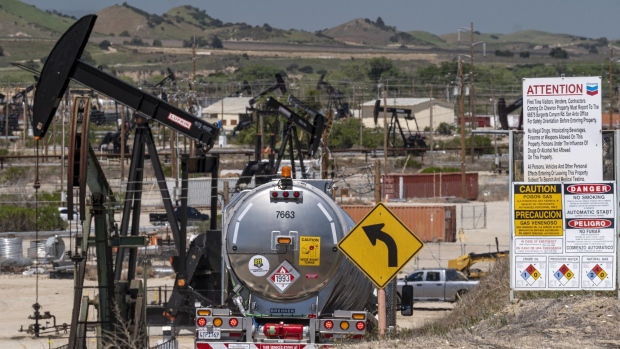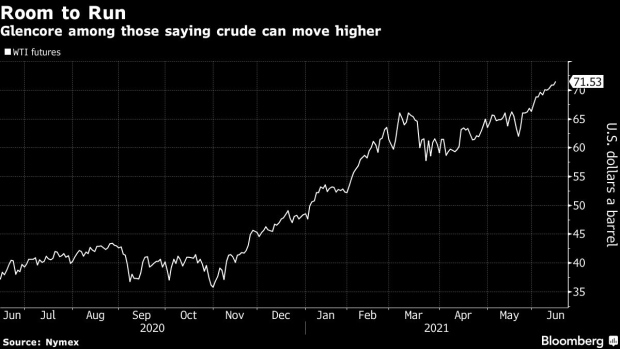Jun 15, 2021
Oil rises to highest since 2018 as traders eye further rally
, Bloomberg News

Oil climbed as a chorus of prominent traders in the crude market said prices will continue to rise after a nearly 50 per cent rally so far this year.
Futures in New York advanced 1.8 per cent on Tuesday to the highest level since October 2018. At the FT Commodities Global summit, Glencore Plc and Vitol Group both said they see further gains in oil. There’s even a chance crude prices could hit US$100 a barrel on a lack of supply amid underinvestment in the sector, according to Trafigura CEO Jeremy Weir.
“Everybody’s continuing to do the math on rising demand and hesitancy among producers to dive back in and put more oil in the market,” said John Kilduff, a partner at Again Capital, LLC. “So there’s a developing structural supply-demand deficit.”

Crude has soared this year in the wake of accelerating COVID-19 vaccination programs. At the FT Commodities Global summit, Glencore’s Alex Sanna said global demand should return to normal in the third quarter of next year, and crude prices may move higher on more widespread vaccinations and inflationary pressures. Vitol CEO Russell Hardy said while diesel and petrochemical demand is already at pre-COVID levels, there is a “little bit more upside” for oil prices.
Meanwhile, money continues to rotate into the commodities sector more broadly. A monthly survey of fund managers by Bank of America showed that bullish commodities bets had overtaken Bitcoin as the most crowded trade in markets.
Prices:
- West Texas Intermediate crude for July delivery advanced US$1.24 to settle at US$72.12 a barrel.
- Brent for August settlement gained US$1.13 to end the session at US$73.99 a barrel.
Further along the oil futures curve, there are signs of market tightness. The difference between the nearest two WTI December contracts on Tuesday closed at more than US$6 a barrel, the strongest close since September 2019, a sign traders are betting on a stronger market.
In the U.S., crude stockpiles are expected to have dropped 2.5 million barrels last week, according to a Bloomberg survey. The industry-funded American Petroleum Institute will report its inventory data later Tuesday, while the U.S. government will release its tally on Wednesday.
“It’s crunch time here in terms of drawing down continuously on inventories and getting us back to tightness globally,” said Kilduff. “That’s helping to grind higher.”
However, domestic fuel demand has been somewhat lackluster at the start of the summer driving season. U.S. gasoline supplies are currently sitting at the highest in three months and the gasoline crack spread, a rough measure of the profit from refining crude into fuel, is at around the lowest in more than three months.
Operators may have juiced imports of gasoline more than needed in the wake of the Colonial pipeline shutdown back in May, according to Bob Yawger, director of the futures division at Mizuho Securities.
“You would think with crude oil ripping like this, it would drag the products along for the ride and it almost always does,” said Yawger. “You rarely see a disconnect this bad.”
Related coverage:
- Oil prices are likely to stay above US$70 a barrel amid increasing summer demand and current supply restraint from OPEC+, according to Victor Shum, vice president of energy consulting for IHS Markit.
- Norwegian energy giant Equinor ASA will boost shareholder payouts and ramp up renewables spending as cash flow and returns recover.
- Colonial Pipeline Co. will perform system updates Tuesday that could mean users may not have access to several services for about four hours.





